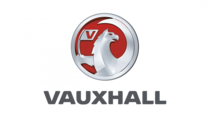Chevrolet Malibu Classic (2005) Handleiding
Lees hieronder de 📖 handleiding in het Nederlandse voor Chevrolet Malibu Classic (2005) (131 pagina's) in de categorie Auto. Deze handleiding was nuttig voor 34 personen en werd door 2 gebruikers gemiddeld met 4.5 sterren beoordeeld
Pagina 1/131

Seats and Restraint Systems ........................... 1-1
Front Seats ............................................... 1-2
Rear Seats ............................................... 1-8
Safety Belts ............................................. 1-10
Child Restraints ....................................... 1-33
Airbag System ......................................... 1-60
Restraint System Check ............................ 1-75
Features and Controls ..................................... 2-1
Keys ........................................................ 2-3
Doors and Locks ...................................... 2-11
Windows ................................................. 2-16
Theft-Deterrent Systems ............................ 2-17
Starting and Operating Your Vehicle ........... 2-21
Mirrors .................................................... 2-33
OnStar
®
System ...................................... 2-38
HomeLink
®
Wireless Control System ........... 2-40
Storage Areas ......................................... 2-44
Sunroof .................................................. 2-47
Instrument Panel ............................................. 3-1
Instrument Panel Overview .......................... 3-4
Climate Controls ...................................... 3-21
Warning Lights, Gages, and Indicators ........ 3-30
Driver Information Center (DIC) .................. 3-47
Audio System(s) ....................................... 3-54
Driving Your Vehicle ....................................... 4-1
Your Driving, the Road, and Your Vehicle ..... 4-2
Towing ................................................... 4-34
Service and Appearance Care .......................... 5-1
Service ..................................................... 5-3
Fuel ......................................................... 5-5
Checking Things Under the Hood ............... 5-10
Bulb Replacement .................................... 5-41
Windshield Wiper Blade Replacement ......... 5-45
Tires ...................................................... 5-47
Appearance Care ..................................... 5-73
Vehicle Identification ................................. 5-82
Electrical System ...................................... 5-83
Capacities and Specifications ..................... 5-91
Maintenance Schedule ..................................... 6-1
Maintenance Schedule ................................ 6-2
Customer Assistance and Information .............. 7-1
Customer Assistance and Information ........... 7-2
Reporting Safety Defects ........................... 7-10
Index ................................................................ 1
2005 Chevrolet Malibu Owner Manual M

GENERAL MOTORS, GM, the GM Emblem,
CHEVROLET, the CHEVROLET Emblem, the MALIBU
Emblem, and the name MALIBU are registered
trademarks; and the name MALIBU MAXX is a
trademark of General Motors Corporation.
This manual includes the latest information at the time it
was printed. We reserve the right to make changes
after that time without further notice. For vehicles first
sold in Canada, substitute the name “General Motors of
Canada Limited” for Chevrolet Motor Division whenever
it appears in this manual.
Keep this manual in the vehicle, so it will be there if it is
needed while you are on the road. If the vehicle is
sold, leave this manual in the vehicle.
Canadian Owners
A French language copy of this manual can be obtained
from your dealer or from:
Helm, Incorporated
P.O. Box 07130
Detroit, MI 48207
How to Use This Manual
Many people read the owner manual from beginning to
end when they first receive their new vehicle. If this
is done, it can help you learn about the features
and controls for the vehicle. Pictures and words work
together in the owner manual to explain things.
Index
A good place to quickly locate information about the
vehicle is the Index in the back of the manual. It is an
alphabetical list of what is in the manual and the
page number where it can be found.
Litho in U.S.A.
Part No. 05MALIBU C First Edition
©
2005 General Motors Corporation. All Rights Reserved.
ii

Safety Warnings and Symbols
There are a number of safety cautions in this book. We
use a box and the word CAUTION to tell about things
that could hurt you if you were to ignore the warning.
{CAUTION:
These mean there is something that could hurt
you or other people.
In the caution area, we tell you what the hazard is.
Then we tell you what to do to help avoid or reduce the
hazard. Please read these cautions. If you do not,
you or others could be hurt.
You will also find a circle
with a slash through it in
this book. This safety
symbol means “Do Not,”
“Do Not do this” or “Do Not
let this happen.”
iii
Product specificaties
| Merk: | Chevrolet |
| Categorie: | Auto |
| Model: | Malibu Classic (2005) |
Heb je hulp nodig?
Als je hulp nodig hebt met Chevrolet Malibu Classic (2005) stel dan hieronder een vraag en andere gebruikers zullen je antwoorden
Handleiding Auto Chevrolet

5 Mei 2023

1 Mei 2023

26 April 2023

13 April 2023

5 April 2023

18 Maart 2023

16 Maart 2023

14 Maart 2023

8 Maart 2023

5 Maart 2023
Handleiding Auto
- Auto Ford
- Auto Fiat
- Auto Opel
- Auto Pioneer
- Auto Renault
- Auto Volvo
- Auto ACME
- Auto Alfa Romeo
- Auto Audi
- Auto Audio-Technica
- Auto BMW
- Auto Dacia
- Auto Dodge
- Auto DS
- Auto Honda
- Auto Hyundai
- Auto Infiniti
- Auto Kia
- Auto Lancia
- Auto Land Rover
- Auto Lexus
- Auto Marklin
- Auto Maserati
- Auto Mazda
- Auto Mercedes-Benz
- Auto Mercury
- Auto Mini
- Auto Mitsubishi
- Auto Nissan
- Auto Peugeot
- Auto POLARIS
- Auto Porsche
- Auto Saab
- Auto Saturn
- Auto Seat
- Auto Sharper Image
- Auto Skoda
- Auto Smart
- Auto Subaru
- Auto Suzuki
- Auto Tesla
- Auto Toyota
- Auto Vauxhall
- Auto Volkswagen
- Auto Jaguar
- Auto Jeep
- Auto Abarth
- Auto Acura
- Auto Aston Martin
- Auto Buick
- Auto Cadillac
- Auto Chrysler
- Auto Citroën
- Auto Genesis
- Auto GMC
- Auto Lincoln
- Auto Mahindra
- Auto MG
- Auto Polestar
- Auto Pontiac
- Auto Rover
- Auto Scion
- Auto Tata
- Auto VDL
- Auto RAM
- Auto GEM
- Auto Chery
- Auto Lada
- Auto McLaren
Nieuwste handleidingen voor Auto

30 Januari 2025

27 Januari 2025

20 Januari 2025

15 Januari 2025

13 Januari 2025

6 Januari 2025

30 December 2025

8 December 2024

6 December 2024

16 November 2024